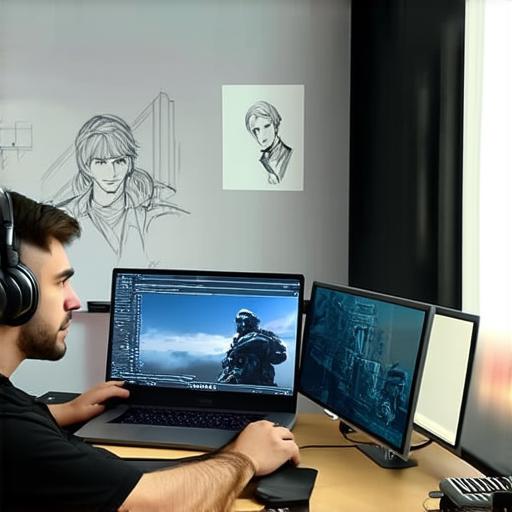Designing a video game can be an exciting and rewarding process, but it’s not always easy. It requires creativity, technical knowledge, and a solid understanding of what makes a great game. In this article, we will provide you with a comprehensive guide on how to design your own video game, covering everything from idea generation to marketing and distribution.
Idea Generation: The First Step in Game Design
The first step in designing a video game is to come up with a concept or idea. This can be anything from a simple idea that you brainstorm on your own to a more complex idea that you get from working with a team of developers. Here are some tips for generating ideas:
- Write down all of your ideas, no matter how silly they may seem.
- Talk to other people about their ideas and see if any of them spark inspiration in you.
- Look at other games in the same genre or similar genres for inspiration.
- Read books, watch movies, and play other games to get new perspectives.
- Think outside the box and come up with unique and innovative ideas.
Once you have a concept, it’s time to start fleshing out the details. You should create a rough outline of what the game will be like, including characters, settings, and storylines. This will give you a clear idea of what you need to focus on and help you stay organized throughout the design process.
Technical Knowledge: The Heart of Game Development
In order to design a video game, you need to have a solid understanding of the technical aspects of game development. This includes programming languages like C++ or Java, game engines like Unity or Unreal Engine, and game design tools like Twine or Scratch. Here are some tips for acquiring technical knowledge:
- Take online courses or tutorials to learn new skills.
- Read books and articles about game development to gain a deeper understanding of the subject matter.
- Join online communities or forums where you can ask questions and get help from experienced developers.
- Practice, practice, practice! The more you work with game design tools and technologies, the better you will become.

Creativity: The Spark that Brings Games to Life
In addition to technical knowledge, creativity is a crucial component of game design. You need to be able to think outside the box and come up with unique and innovative ideas. Here are some tips for fostering creativity:
- Take breaks and engage in activities that inspire you, such as reading, drawing, or taking a walk in nature.
- Collaborate with other developers and get feedback on your ideas.
- Experiment with different game mechanics and see what works best.
- Use storytelling techniques to create engaging characters and settings.
Game Design Tools: The Key to Efficiency and Productivity
There are a variety of game design tools available that can help you streamline the game development process. These include game engines like Unity or Unreal Engine, which provide all of the technical infrastructure you need to create a game, as well as game design tools like Twine or Scratch, which allow you to create interactive stories and prototypes. Here are some tips for choosing the right game design tool:
- Consider the type of game you want to create and choose a game engine that is best suited to your needs.
- Look for a game design tool that allows you to create interactive stories or prototypes quickly and easily.
- Choose a tool that is easy to use and has a low learning curve, so you can start creating games right away.
Marketing and Distribution: The Final Frontier of Game Development
Once your game is complete, it’s time to think about marketing and distribution. This includes promoting your game on social media, reaching out to reviewers and influencers, and finding a distribution platform that will get your game in front of as many people as possible. Here are some tips for successful marketing and distribution:
- Create a strong brand identity for your game, including a logo, website, and social media presence.
- Use paid advertising to reach potential players and increase visibility for your game.
- Reach out to reviewers and influencers in the gaming community to get coverage for your game.




